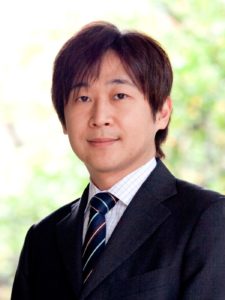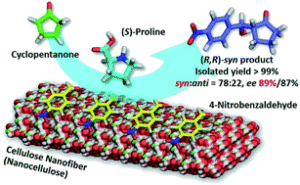We are very pleased to introduce Dr Takuya Kitaoka, corresponding author of the paper ‘Nanocellulose enriches enantiomers in asymmetric aldol reactions‘. His article has been very well received and handpicked by our reviewers and handling editors as one of our October HOT articles. Takuya told us more about the work that went into this article and what he hopes to achieve in the future. You can find out more about the author and his article below and find more HOT articles in our online collection.
Meet the authors
Dr Takuya Kitaoka is a professor at Kyushu University, Japan, who is in charge of Nanomaterials Chemistry and Sustainable Bioresources Science. He graduated from the University of Tokyo, Japan in 1993, and received his M.Sc. (Forest Products Science) in 1995 and his Ph.D. (Agricultural Science) in 2000, both from the University of Tokyo, Japan. Dr. Kitaoka is an expert in cellulose & paper chemistry. He has expanded his research into bioadaptive materials and interfacial organocatalysis inspired by inherent nanoarchitectures of nanocellulose. He was awarded “The Young Scientists’ Prize” from the Minister of Education, Culture, Sports, Science and Technology, Japan in 2007, “JSPS PRIZE” from the Japan Society for the Promotion of Science in 2011, “The Cellulose Society of Japan Award” from the Cellulose Society of Japan in 2013, and “Fiber Science and Technology Award” from the Society of Fiber Science and Technology, Japan in 2014.
Could you briefly explain the focus of your article to the non-specialist (in one or two sentences only) and why it is of current interest?
Wood-derived nanofibers play a crucial role in regulating asymmetric catalysis to produce chiral products, which will expand the practical possibility of natural woody materials in state-of-the-art chemistry.
How big an impact could your results potentially have?
Inexpensive woody nanomaterials might gain equal performance to highly active rare metal catalysts.
Could you explain the motivation behind this study?
I believe that nano-organized natural polysaccharides have great potential for their nanostructure-triggered novel functions.
In your opinion, what are the key design considerations for your study?
The structural regularity of chiral sources on the surface of nanocellulose is the key to unlock the secret of nanocellulose in advanced materials applications.
Which part of the work towards this paper proved to be most challenging?
The combination of woody nanocellulose and proline, one of many natural amino acids, was a completely new challenge in asymmetric catalysis.
What aspect of your work are you most excited about at the moment?
Up until now, catalysts determine the product structures, but now wood does.
What is the next step? What work is planned?
I will expand the research and development opportunities of this novel metal-free organocatalytic system into other natural nano-polysaccharides, such as chitin and chitosan nanofibers, which will be applicable for a variety of valuable reactions in chemical industries.
Nanocellulose enriches enantiomers in asymmetric aldol reactions
Naliharifetra Jessica Ranaivoarimanana, Xin Habaki, Takuya Uto, Kyohei Kanomata, Toshifumi Yui and Takuya Kitaoka
RSC Adv., 2020,10, 37064-37071
DOI: 10.1039/D0RA07412H, Paper
 Submit to RSC Advances today! Check out our author guidelines for information on our article types or find out more about the advantages of publishing in a Royal Society of Chemistry journal.
Submit to RSC Advances today! Check out our author guidelines for information on our article types or find out more about the advantages of publishing in a Royal Society of Chemistry journal.
Keep up to date with our latest HOT articles, Reviews, Collections & more by following us on Twitter. You can also keep informed by signing up to our E-Alerts.












